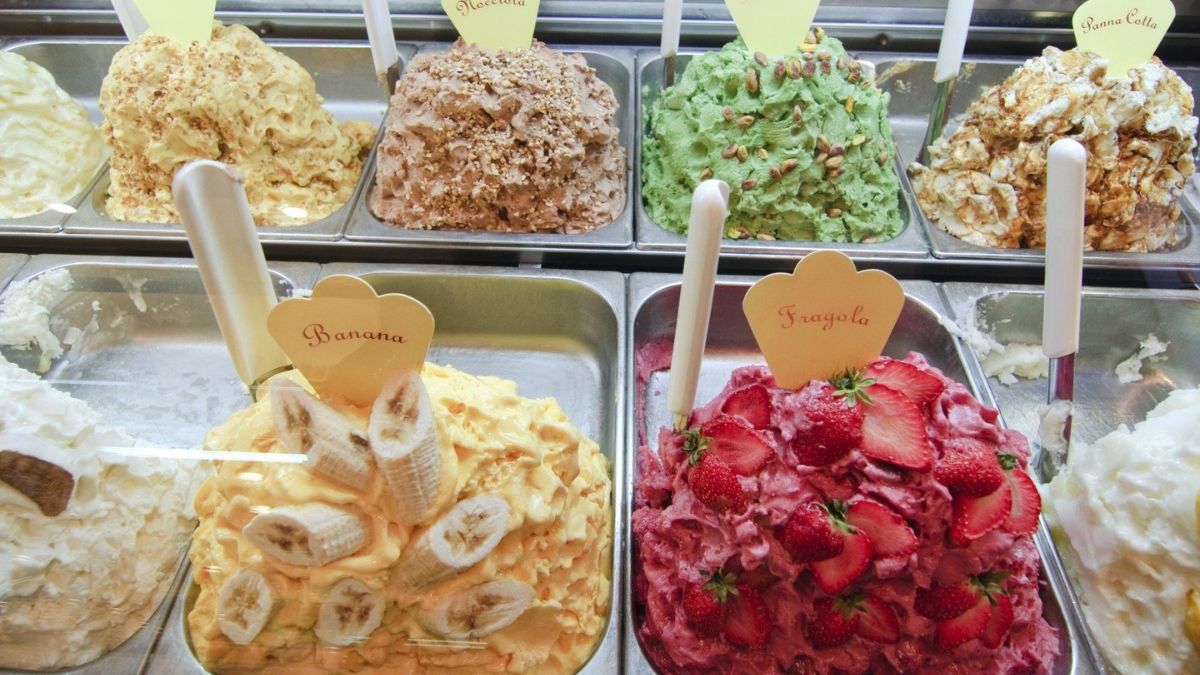The Delectable World of Gelato: A Culinary Journey Through Italy’s Frozen Delight
Italy is renowned for its art, history, and culture, but perhaps one of its most widely celebrated contributions to the world is gelato. Creamier, denser, and richer than regular ice cream, gelato captures the heart and taste buds of anyone who tries it. But gelato isn’t just a frozen dessert—it’s an experience, a tradition, and a story that spans centuries.
Join us as we uncover the history, flavors, and artistry of gelato. By the end, you’ll know why it is such an indispensable part of Italian culture—and maybe, you’ll be inspired to scoop up some of your own.
What Exactly Is Gelato?
If you’ve tasted both ice cream and gelato, you’ve likely noticed the difference in texture and flavor intensity. But what separates g from its frozen counterparts?
A Difference in Ingredients and Technique
it contains less air than ice cream, giving it its dense texture. It’s also churned at a slower speed, which prevents the mixture from becoming overly aerated. Additionally, gelato typically has a lower fat content because it’s made with more milk than cream. The result? An ultra-smooth, incredibly creamy treat that feels luxurious with every bite.
Another defining factor of it is its temperature. Served slightly warmer than ice cream, gelato melts in your mouth faster, allowing its flavors to fully shine.
The History of Gelato
it has ancient roots tracing back to the Roman Empire, when snow and ice were mixed with honey and fruit to create an early form of the dessert. However, the gelato we know and love today began to take shape during the Renaissance in Italy.
Bernardo Buontalenti, a Florentine chef, is often credited as the father of modern gelato. He wowed the Medici court in the 16th century by perfecting a semi-frozen dessert that blended milk, eggs, and sugar. Since then, evolved into a cultural staple, spreading from Italy to become a global sensation.
Must-Try Gelato Flavors
its shops, or gelaterie, across Italy offer a rainbow of flavors. From timeless classics to adventurous combinations, there’s something for everyone. Here are some must-try flavors to seek out:
1. Stracciatella
This classic flavor combines creamy vanilla gelato with crunchy shards of dark chocolate. The chocolate hardens when mixed into the cold , creating a satisfying contrast in texture.
2. Pistacchio
Pistachio gelato is revered for its nutty, slightly salty profile. A good pistacchio uses high-quality pistachios from regions like Bronte in Sicily, where the nuts are renowned for their vibrant green color and unique flavor.
3. Nocciola
Fans of rich, nutty flavors will fall in love with nocciola, or hazelnut gelato. It tastes like a frozen version of your favorite hazelnut spread—luxuriously creamy and indulgent.
4. Frutti di Bosco
A medley of mixed berries, frutti di bosco is a refreshing and tangy option. It’s the perfect match for a sunny day in Italy.
5. Zabaione
Made with egg yolks, sugar, and Marsala wine, zabaione gelato boasts a rich, custard-like flavor with a hint of boozy sweetness.
6. Bacio
Inspired by the famous Italian chocolate hazelnut candy, bacio marries chocolate and hazelnut into one irresistible treat.
How to Enjoy Gelato the Italian Way
Eating gelato is not just about the dessert itself—it’s about the experience.
- Choose artisanal gelaterie: For the best quality, look for shops that describe their gelato as “artigianale” or artisanal. These shops often use fresh, natural ingredients and avoid artificial colors or additives.
- Order small portions: Italians often enjoy just one or two scoops in a small cup (coppetta) or cone (cono). The emphasis is on quality, not quantity.
- Experiment with flavors: Don’t be afraid to try unique combinations. Many gelaterie allow you to mix different flavors even in a small serving.
- Slow down and savor: Italians value the joy of indulgence. Take your time to appreciate the flavors, textures, and atmosphere.
The Role of Gelato in Italian Culture
it is woven into the fabric of Italian life. It’s more than a sweet treat; it’s a symbol of community and leisure. Italians view gelato as the perfect way to celebrate gatherings with family and friends, or as a pick-me-up during a leisurely evening stroll.
Traditional festivals, like the annual its Festival held across Italy, bring locals and tourists together to celebrate the art of gelato-making. These events showcase the creativity and craftsmanship of gelatieri (gelato artisans) from across the country, reinforcing gelato’s timeless significance.
Bringing Gelato Home
While part of its charm is enjoying it in Italy, the good news is, its magic can now be experienced at home. With high-quality its makers and readily available fresh ingredients, re-creating these flavors in your own kitchen is easier than you’d think!
If a DIY approach feels a bit ambitious, many Italian its brands now ship nationwide, bringing a taste of Italy to your doorstep.
Every Scoop Tells a Story
At its core, it is more than frozen milk or sugar—it’s a reflection of Italy’s rich culinary tradition and passion for artisanal quality. Whether you’re strolling through cobblestone streets with a cone in hand, or enjoying a cup while watching the sunset, each scoop tells a story of craftsmanship and indulgence.
Planning a trip to Italy? it is a must-try experience. Already dreaming of gelato? Why not explore the flavors at a local gelato spot? Either way, you’re joining the timeless tradition of savoring life—one delicious bite at a time.



